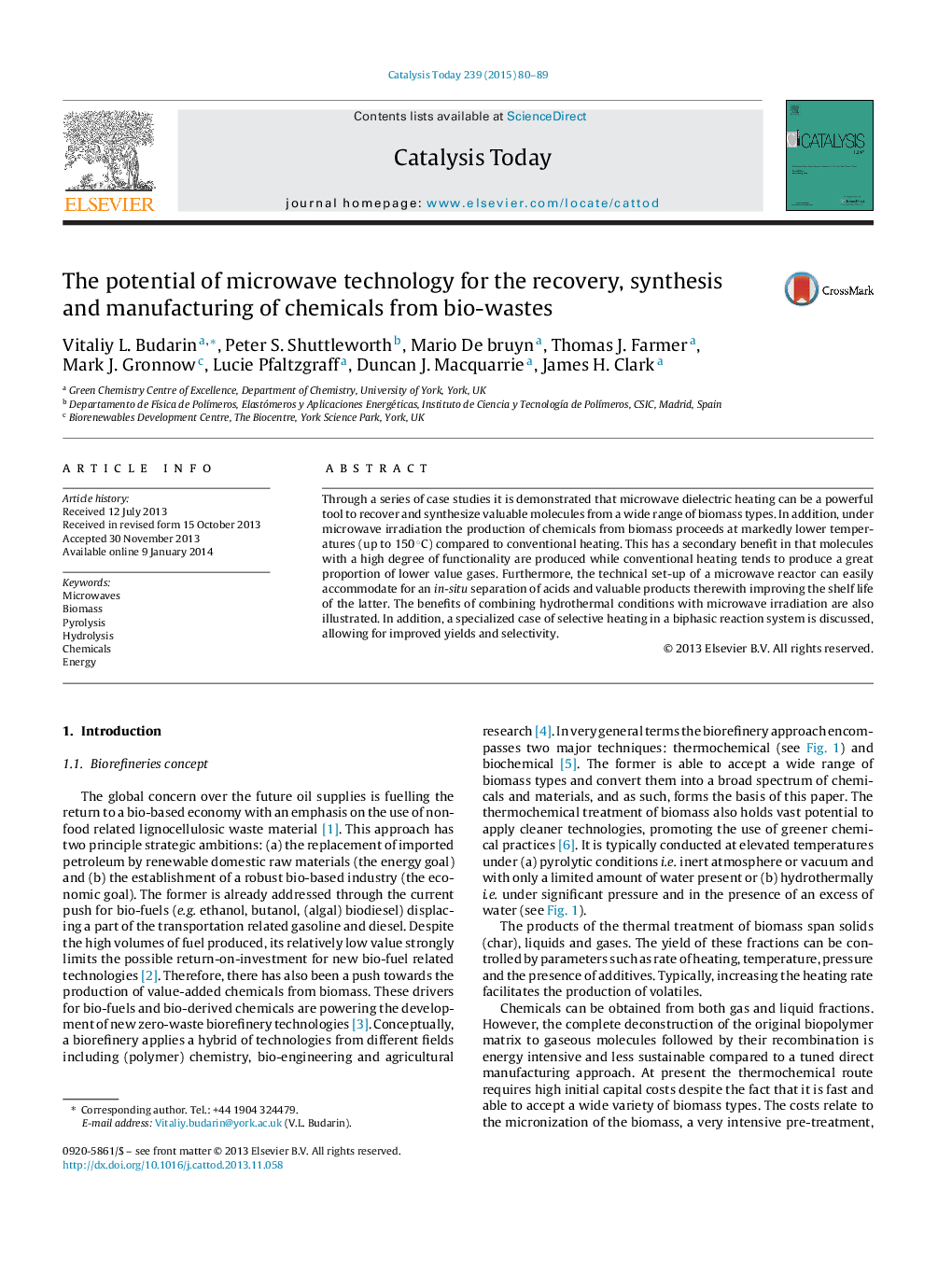| Article ID | Journal | Published Year | Pages | File Type |
|---|---|---|---|---|
| 54002 | Catalysis Today | 2015 | 10 Pages |
•Microwave pyrolysis can be successfully applied to a wide range of lignocellulosic biomass types.•The production of volatile organic matter takes place at those temperatures coinciding with a maximal rate of heating.•The mild conditions at which microwave pyrolysis occurs preserves largely the functionality of obtained chemicals.•Through a microwave-assisted hydrolysis of biomass a range of products can be recovered in a minimal amount of steps.•Through carbon and mass balances the sustainability metrics of the pyrolysis are determined.
Through a series of case studies it is demonstrated that microwave dielectric heating can be a powerful tool to recover and synthesize valuable molecules from a wide range of biomass types. In addition, under microwave irradiation the production of chemicals from biomass proceeds at markedly lower temperatures (up to 150 °C) compared to conventional heating. This has a secondary benefit in that molecules with a high degree of functionality are produced while conventional heating tends to produce a great proportion of lower value gases. Furthermore, the technical set-up of a microwave reactor can easily accommodate for an in-situ separation of acids and valuable products therewith improving the shelf life of the latter. The benefits of combining hydrothermal conditions with microwave irradiation are also illustrated. In addition, a specialized case of selective heating in a biphasic reaction system is discussed, allowing for improved yields and selectivity.
Graphical abstractFigure optionsDownload full-size imageDownload high-quality image (136 K)Download as PowerPoint slide
